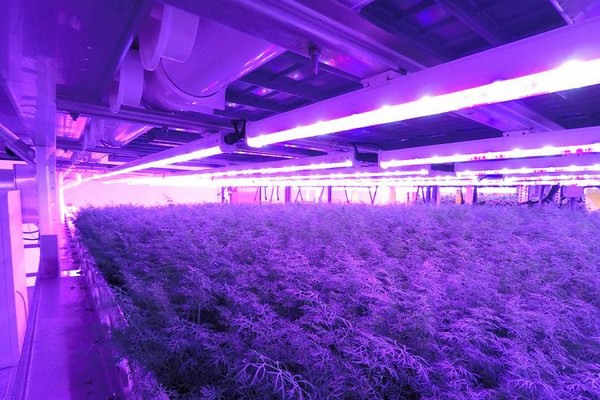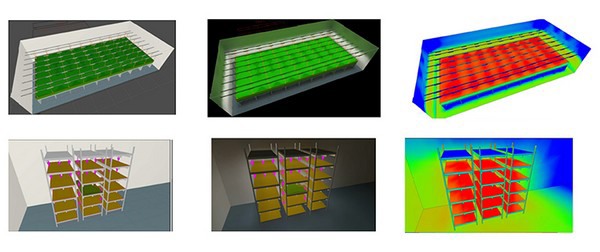No matter where you look, the effective use of artificial lighting has long been a combination of art and science. In retail, the placement of lighting, its color temperature, strength, and direction can showcase products and encourage customers to make that aspirational purchase.
However, when you consider the horticulture industry, it seems that the power and value of design have so far been left unexplored. Until recently, high-pressure sodium (HPS) lamps were most commonly used in glasshouse environments. Today, with LED solutions demanding minimal maintenance, promising longer useful lifespans backed by comprehensive warranties, and boosting yields through the delivery of optimized light spectrum “recipes,” growers are increasingly considering this energy-efficient alternative.
Missing a trick?
As a manager in Current’s technical design team, Charlie Benson has designed lighting installations across a variety of sectors, including retail, industrial and sporting environments. He now applies his design expertise to horticulture, with hundreds of horticultural lighting design projects completed to date across the globe: “90% of lighting design is the same, whether you’re designing the perfect lighting for a supermarket or a greenhouse,” he mentions. “With horticulture, however, you have to learn a different language, with different metrics and the knowledge that the lighting you install could make the difference between success and failure of a crop and its yield; the stakes are therefore considered to be higher.”
 Current Technical Design Manager Charlie Benson
Current Technical Design Manager Charlie Benson
Growers and consultants in this sector aren’t fully aware of the design capabilities and technology available to them. Too often, lighting is considered a piece of equipment that fits into an existing installation, at a certain price point, rather than something that could offer a competitive advantage through the creative application.
Thinking creatively inside the box
Charlie explains, “Taking a consultative approach is far more common in areas such as retail lighting. Typically, it would start with understanding the final goals of the installation, whether the focus is on saving energy and money or creating the best possible experience for customers entering the store. We’d look at variables such as the building layout, floorplans, windows, key sales points, etc., and then design an incredibly detailed virtual environment that shows the placement of the lighting, its effects, appearance, and interaction with other variables. By spending time on this phase, when we actually come to the installation, there are no surprises and all potential snags have been worked out in advance.”
This same approach is now allowing growers to work out the best possible lighting strategy for their greenhouses or vertical farming operations. For growers who are perhaps apprehensive about the switch from HPS to LED, a detailed lighting simulation can help them understand the different variables at play in their installations.

Sometimes, the results can be surprising. “The level of detail that we include in our modelling allows growers to see the impact of different lighting installations with minimal risk, as it’s all living in the virtual world,” says Charlie. “We’ve even been able to demonstrate to a customer how a denser layout than they’d originally considered would have a material benefit to their potential yields. If we hadn’t been able to show the data and communicate that benefit in a highly visual way, we could have risked being seen as overselling and lost out to a cheaper competitor who simply gave a price on the luminaires outlined in the RFP. However, the customer could clearly see the advantage in following our proposed plan and awarded Current the contract based on that model.”
Today, there’s little standardization in indoor farming. Every greenhouse setup is potentially affected by its position, location, the type of glass used, its age and any internal structures that could block the natural and artificial lighting throughout the day. In vertical farming, even the size of racks used can vary from project to project, so a bespoke approach for every installation is paramount in ensuring the highest possible yields. Greenhouse growers are also abandoning the traditional two-dimensional approach to planning their crops, choosing instead to grow in a variety of formats and using different technologies. However you choose to maximize your space, from layers of horizontal racks to “grow walls” and pillars, every plant must have optimal access to light in order to thrive, and the design team must have the knowledge and ability to think creatively in order to achieve this.

The science behind success
Lighting design is only truly effective when grounded in rigorous scientific insight. Simulations in virtual design environments can only be as accurate as the data and parameters set. For this reason, the lighting design team within Current can call on its in-house plant science team for additional insight when tackling a new project. This ensures they have the most accurate and up-to-date information regarding the proposed crop, its growth cycle, and the way it reacts to different parameters, such as light spectrum or the daily light integral, at different stages of growth.
“We know that light has a major impact on our circadian rhythms as human beings, but we’re also realizing the importance of gradual dimming to recreate the natural feel of sunrise and sunset for plants in controlled environment agriculture,” notes Charlie. “These are the sorts of insights that we feel will benefit the industry as a whole and we’re committed to working with our peers, partners, customers, and suppliers to drive the horticulture industry forward.”
A vision for indoor horticulture
Growers are experts in producing their crops and running their businesses, but many may not realize what they can or should expect from their horticultural lighting. By combining right-brain creative design and modeling with left-brain scientific rigor, growers will future-proof their operations, lower their financial burden and maximize their potential returns—now, and in the future.

